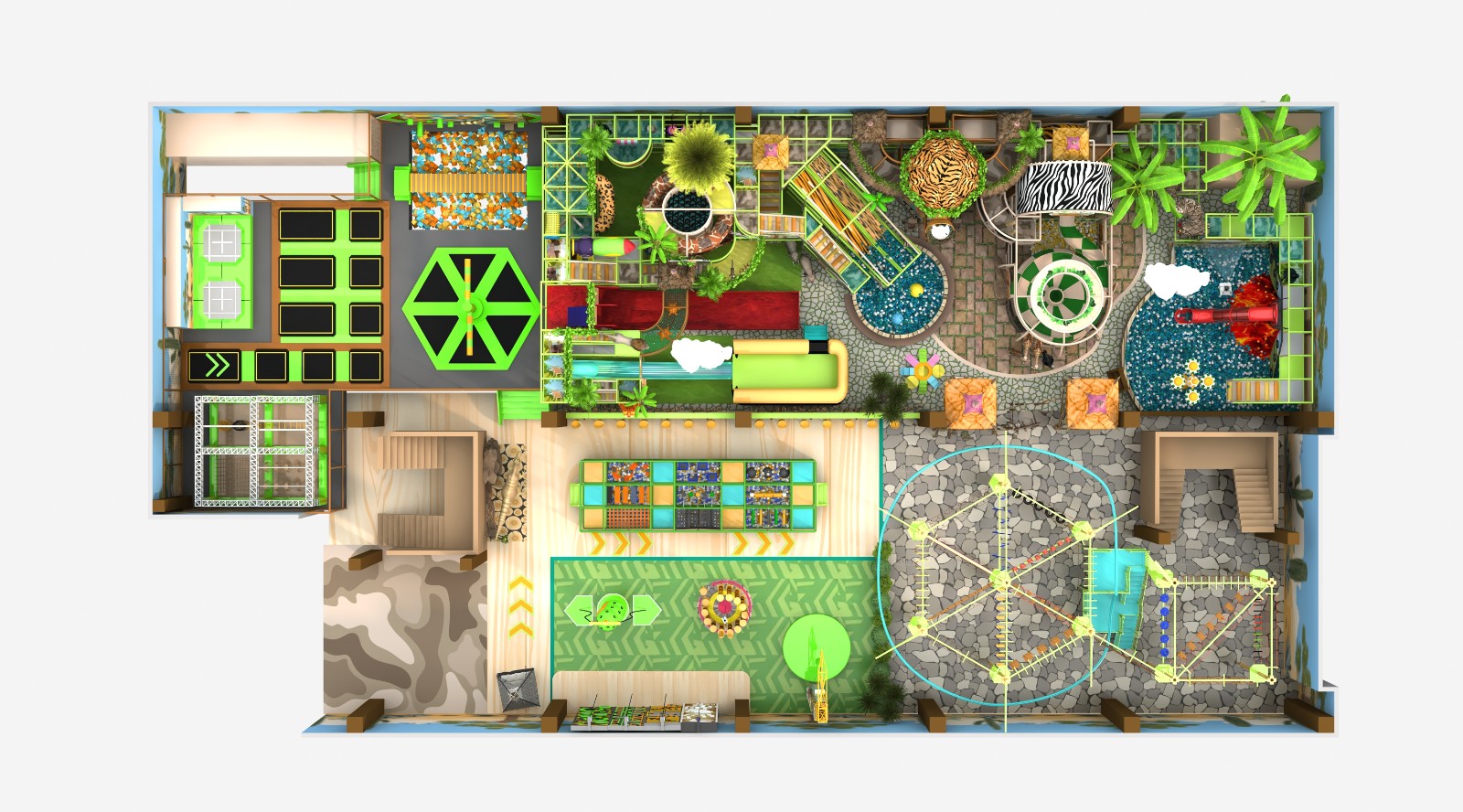Please contact us!

Indoor playgrounds are evolving rapidly, with several key trends shaping the market. Here's a detailed overview of these trends along with data to support them:
Interactive Screens and Virtual Reality (VR):
Digital play experiences are becoming a standard feature in modern indoor playgrounds. Interactive screens allow children to engage with games that respond to their movements, promoting both physical activity and cognitive development. VR experiences offer immersive environments where children can explore different worlds safely.
Market Size: The global market for augmented reality (AR) and VR in the education sector, which includes applications in playgrounds, was valued at approximately USD 1.37 billion in 2021 and is expected to grow at a CAGR of 18.2% from 2022 to 2030 .
Case Studies: Several playgrounds in North America and Europe have incorporated digital elements, leading to increased visitor numbers and longer dwell times.
Accessibility Features:
Indoor playgrounds are increasingly designed with inclusivity in mind, ensuring that children with special needs can participate fully. This includes the use of ramps, sensory play equipment, and quiet areas for children with autism or other sensory processing disorders.
Market Demand: The demand for inclusive playgrounds is rising, with governments and organizations advocating for universal design standards in play spaces. In the U.S., the Americans with Disabilities Act (ADA) mandates accessibility, pushing playground operators to adopt inclusive designs.
Growth Projections: The market for special needs education tools and technologies, which includes inclusive playground equipment, is projected to grow by USD 3.83 billion from 2021 to 2026, progressing at a CAGR of 5.02% .
Use of Sustainable Materials:
There is a growing trend toward using eco-friendly materials in playground construction. This includes recycled plastics, sustainably sourced wood, and non-toxic paints and coatings.
Market Impact: The global green building materials market was valued at USD 238.91 billion in 2021 and is expected to expand at a CAGR of 11.7% from 2022 to 2030 . Indoor playgrounds are part of this broader trend, with many facilities seeking LEED certification.
Consumer Preference: Surveys indicate that 68% of parents prefer playgrounds that use sustainable materials, reflecting a broader societal shift toward environmental responsibility.
Hygiene and Cleanliness:
Post-pandemic, there has been a significant focus on hygiene in indoor playgrounds. This includes the installation of hand sanitizing stations, regular disinfection of play areas, and the use of antimicrobial materials.
Technology Integration: Some playgrounds have adopted UV light cleaning systems and touchless entry to reduce the risk of contamination, contributing to increased consumer confidence.
Health Statistics: Reports indicate that playgrounds with enhanced safety and hygiene measures have seen a 20-30% increase in visitor numbers compared to those without such measures .
Thematic Experiences:
Customized themes based on popular movies, books, or cultural elements are increasingly popular. This trend allows for a more engaging and immersive play experience that resonates with children's imaginations.
Economic Impact: Themed indoor playgrounds often command higher admission fees and can attract more visitors, leading to a significant ROI for operators. Data shows that themed playgrounds can see a revenue increase of up to 40% compared to non-themed playgrounds .
Use of IoT and AI:
Indoor playgrounds are integrating Internet of Things (IoT) devices and artificial intelligence (AI) to monitor equipment usage, ensure safety, and personalize the play experience. For instance, smart sensors can track how often equipment is used and alert staff when maintenance is needed.
Future Growth: The smart playground market is expected to grow by USD 6.14 billion during 2023-2027, expanding at a CAGR of 18.24% during the forecast period .
User Engagement: AI-driven platforms can offer personalized game recommendations and track children's progress, creating a more engaging experience for repeat visitors.
These trends indicate a dynamic and rapidly evolving indoor playground industry that is increasingly focused on technology, inclusivity, sustainability, and safety. Operators who embrace these trends are likely to see significant growth and customer satisfaction in the coming years.
Would you like further information or specific data points on any of these trends?Please contact us at info@toymakerinchina.com
Quick Links:
Trampoline parkChildern Indoor Play AreaChildren Indoor PlaygroundIndoor Play SructuresIndoor Playground EquipmentIndoor Playground SupplierKids Indoor PlaygroundIndoor Playground FactoryCopyright Wenzhou Dream Garden Amusement Equipment Co.,Ltd | Sitemaps|Xml
| Privacy Policy|
Please contact us!

